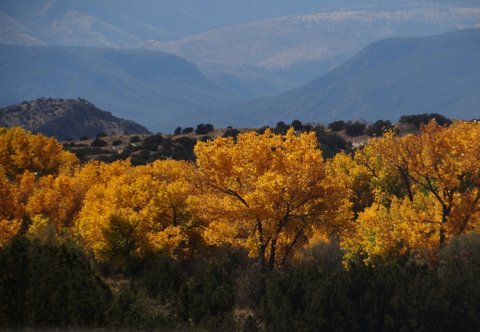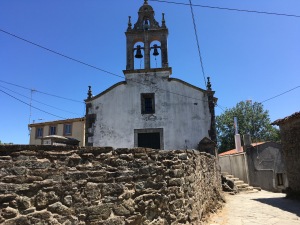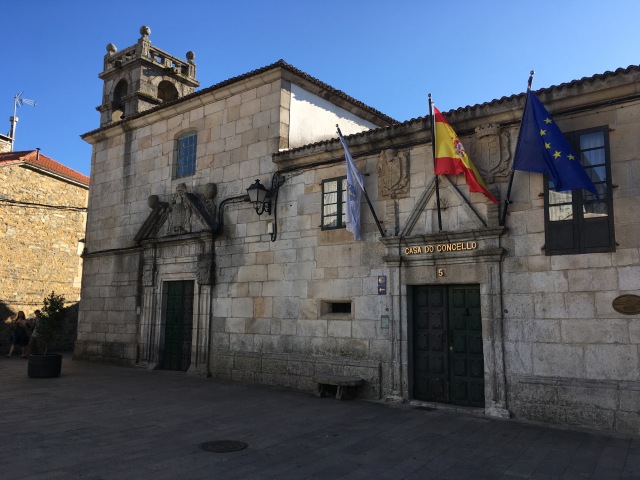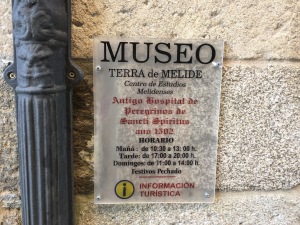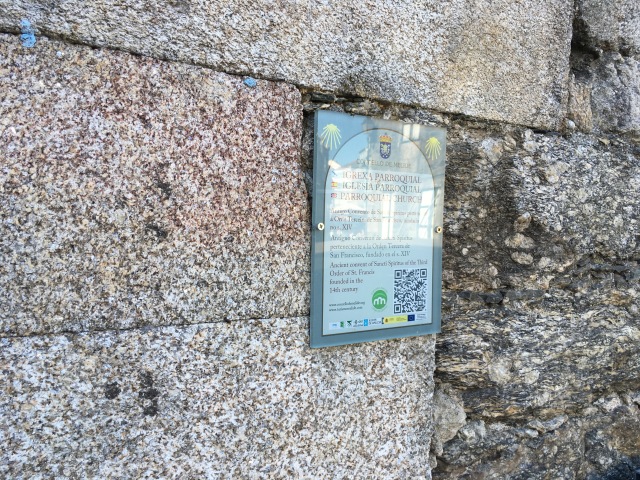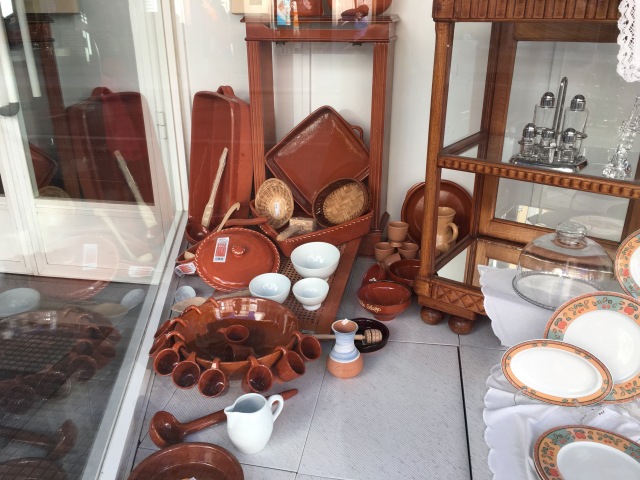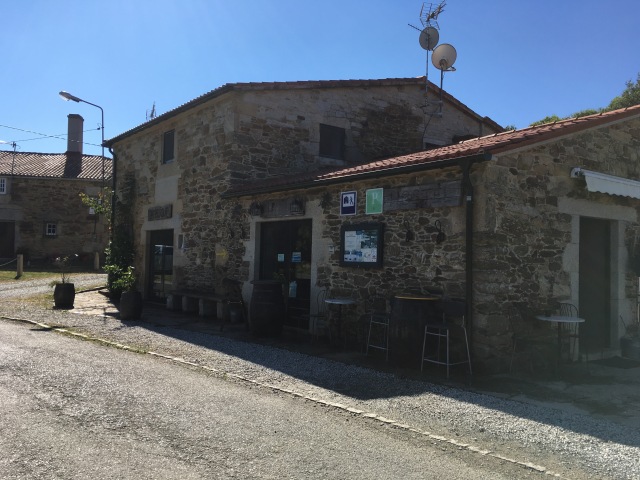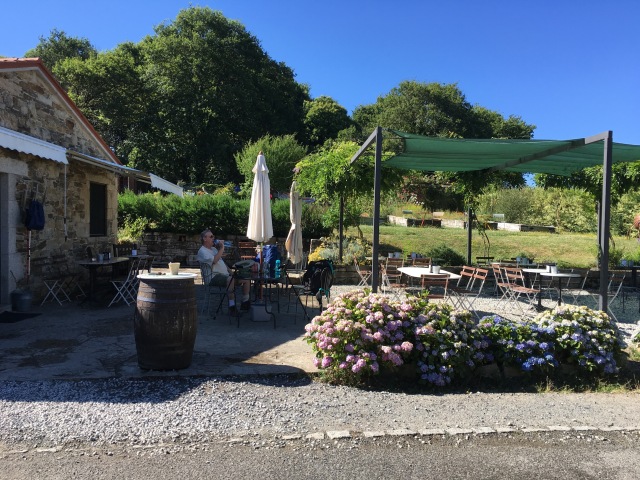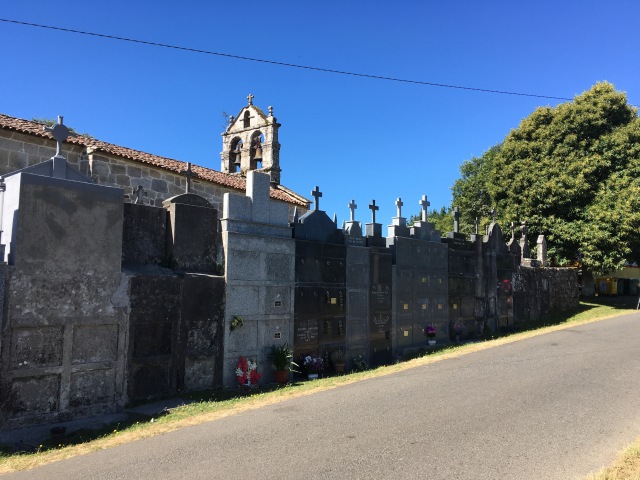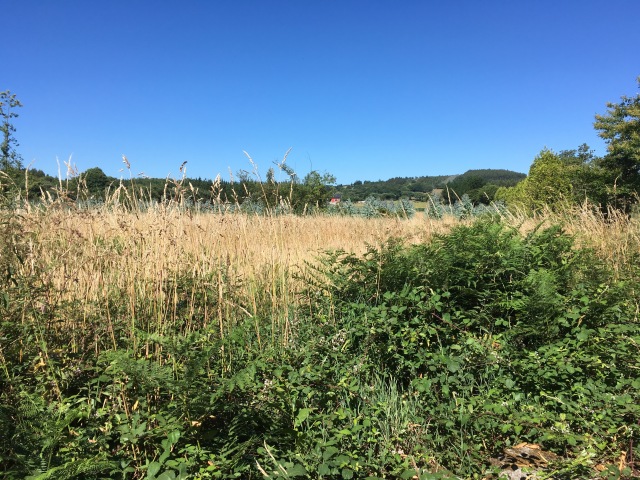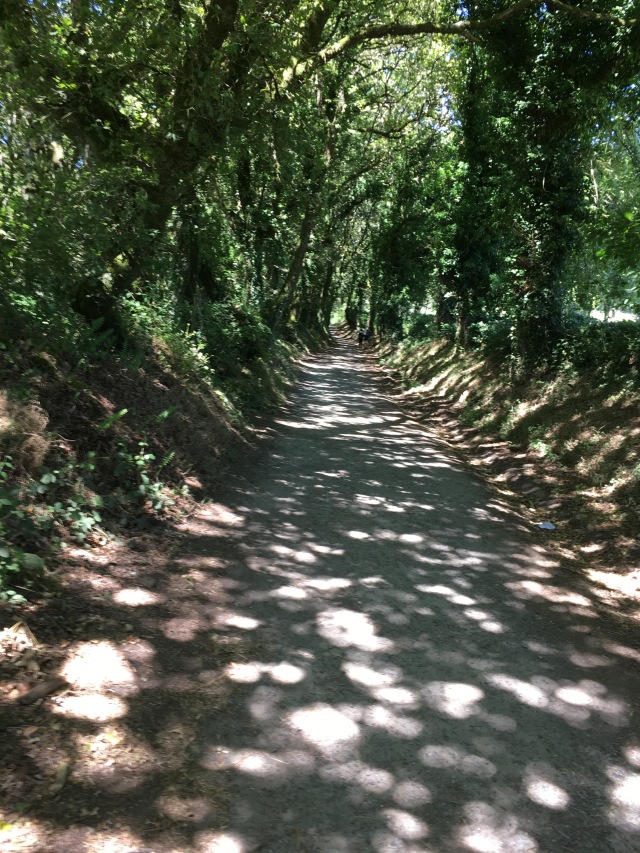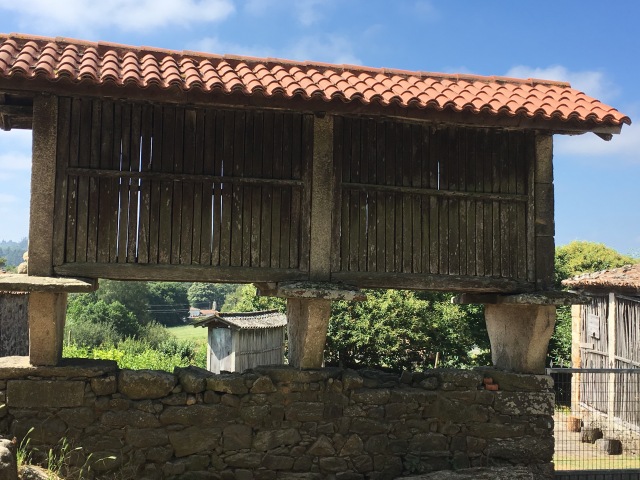The arrival in Santiago de Compostela is thrilling! Since all of the routes to Santiago – from the South of Spain, through the French Pyrenees, along the Atlantic Coast of Spain, to name just a few – meet up several days before you arrive at the Cathedral, there are lots and lots of people heading for the same destination. And after being in the countryside and small towns for almost a week, I really felt the urban quality of the final kilometers into Santiago.
My friend, Jim Gittelson, and I lost track of each other temporarily. After being unable to find him at the big hill which affords the first glimpse of the Cathedral, I gave up and continued to walk toward Santiago and the big square where the Cathedral is situated. But I stopped en route at a small restaurant for a bite of lunch. Lo and behold, Jim looked in the door and spotted me! Given all of the people on the Camino at this point, I found it rather miraculous that we managed to hook up to walk the final couple of kilometers together.
Santiago de Compostela is a beautiful city. I loved it there and was so glad that Rick Steves recommended spending several days in Santiago. Trusting in Rick’s recommendation, we made reservations at Pension Girasol for 3 nights. It was a cute little place in the Old Town, not too far from the Cathedral. The only drawback was that the street noise at night in July – not sure how it is at other times of year – was deafening. Thank goodness we were tired after long days of sight-seeing and walking. I somehow managed to get to sleep, but it was hard with the noise level. Although it was incredibly hot, I had to shut the windows in an non-air-conditioned room in order to sleep.
As you enter Santiago on foot and approach the Cathedral, there is a group of musicians on the big staircase that leads down into Cathedral Square. One of them plays the bagpipes, and you can’t miss them, because there is a stone roof over the staircase that magnifies the sound 1000 fold! Yet the excitement of reaching our destination was incredible.
The square is so beautiful and majestic. There are majestic stone buildings on all sides of a huge open square. When we arrived, the facade of the Cathedral was in the midst of a total makeover. So we didn’t get to see it too well. But we stopped at the wonderful Parador that used to be a hospital on the square, took a look around, then circled the Cathedral to get a look from all sides. Here are two photos of the Parador lobby area:

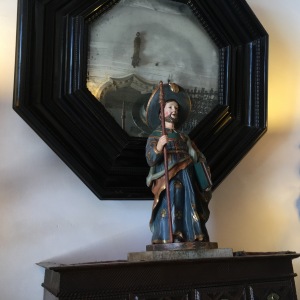
And here is a series of photos of the exterior of the Cathedral from various vantage points:
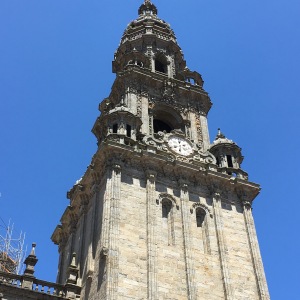

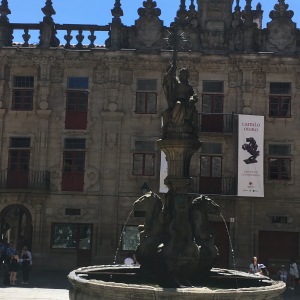
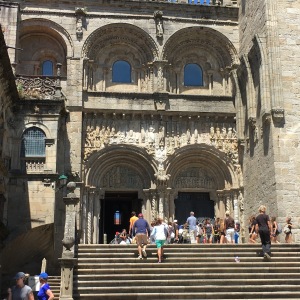
Staying with the Cathedral for a moment, we went to the Pilgrim Mass on the second day in Santiago, which always takes place at noon. We arrived in Santiago too late to attend on our first day, so we made plans to see the interior of the Cathedral and attend the mass the next day.
There were so many people in the Cathedral that morning that it was fairly noisy. Members of the Cathedral staff and security detail asked for silence so that others may worship. But with that many people, it’s hard to enjoy silence in the main sanctuary. Some of the side chapels have doors that close, and these chapels allow a bit more peace and quiet for those who wish to pray or meditate. Here are several photos of the interior of the Cathedral:

Left side of the altar area. The intensity of the gold and lighting made it hard to take a photo of the main altar, which is why I didn’t get any good photos to share with you.

A side Chapel depicting Christ’s Passion.
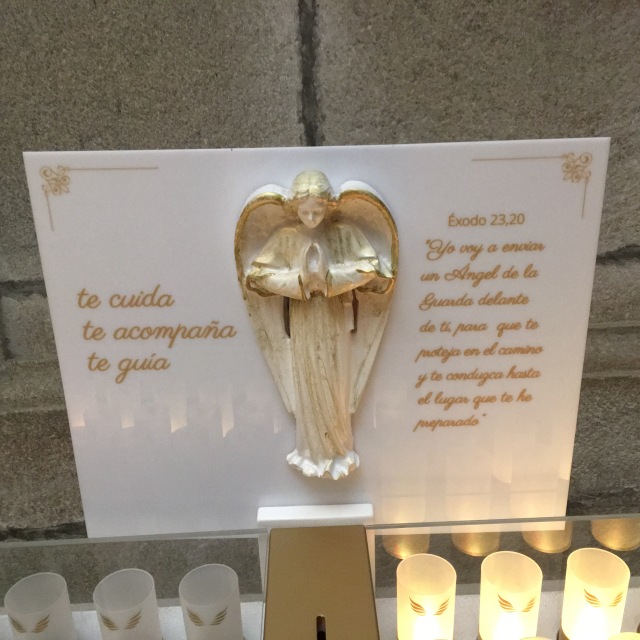
Outside of the Chapel you will see in the next photo. The Spanish reads: I will guard you, accompany you and guide you. Exodus 23:30 – “I will send a Guardian Angel before you to protect you on the Camino and to guide you to the place that I have prepared for you.”
This is where I lit a candle for Franz Vote’s brother, Fred. Franz is the music director of New Mexico Performing Arts Society and my husband. Although Fred died almost 4 years ago, I was spontaneously moved to light a candle for him here. He was a devout Roman Catholic and lived his faith every day. For me, that is what can be good about a person’s faith – it can motivate a person to be loving, generous, and all of the good things we associate with people we look up to.

This is the side Chapel with the Guardian Angel posted directly outside the glass doors. It was special to be able to sit quietly here before the Pilgrim Mass.

I very much admire and love Pope Francis. This plaque inside the Cathedral commemorates the celebration of compassion and mercy. It reads: Merciful like the Father. Celebration of Mercy. Isaiah 53:12: “Yet it pleased the LORD to bruise him … for he shall bear their iniquities” and Ephesians 2:4-5: “But God, who is rich in mercy, for his great love wherewith he loved us, Even when we were dead in sins, hath quickened us together with Christ.” Pope Francis is certainly an example of a person filled with compassion, someone who lives his faith every day.
We managed to get wonderful seats for the Pilgrim Mass. And we were close to the organ pipes, which were magnificent. It was thrilling to hear the beautiful organ throughout the Mass. Here is a note for those planning to walk the Camino – if you don’t know Spanish, it would be great to study it before making the journey. The Homily and most of the Pilgrim Mass are conducted in Spanish. There are sometimes other priests, mainly from European countries, who serve as co-celebrants.
I attended the Pilgrim Mass twice because I loved it so much. Each one is unique, depending upon who is attending. For example, on the first day we had a youth choir from a Spanish parish that sang and was honored by the presiding priest. At the second Pilgrim Mass there were nuns in the special guest section, dressed all in white. They say right up front near the altar. And priests from Germany, France and Portugal recited the most important parts of the Mass in their native languages. But there were no English-speaking priests, so it was important to be able to understand Spanish in order to fully participate in the Mass. I wanted to mention here that you don’t have to be Catholic in order to be part of the Mass – we are all part of humanity and, whatever our beliefs, it is very inspiring to celebrate the journey with so many others in such a beautiful place.
The priest talked about how the Camino is like our journey in life. It is filled not only with joyful moments, but also presents challenges to pilgrims on their way. He emphasized that the Camino lets us experience the full spectrum of life and stressed how important it is for us to live the entire experience in all of its facets. Personally, this helped me to take in a lot of what had transpired on the entire journey. So much happens each day that it’s hard to take it all in while it’s happening. Or at least that was how the Camino was for me over a two and one-half week period. In fact, I am still experiencing it on a deep spiritual level.
People often ask you why you are on the Camino? Why would you undertake a journey such as this? My answer to them is that, every ten years, I take a special trip to commemorate the next decade of life. Allowing space in this incredibly hectic and stressful life makes room for insight. I had just turned 60. And as you read in an earlier post, I had dreamed of making this trip for well over 20 years. July 2016 is when it became possible and, indeed, necessary. After working tirelessly to bring New Mexico Performing Arts Society to life for 4 years, I was ready for a long break to recover on every level: physical, spiritual and emotional.
The height of the Pilgrim Mass is the lighting of the huge incense burner, called a Botafumeiro in Galego, the language of Galicia. At the second Pilgrim Mass, I was in the first row after the cordoned-off special guest section, so I was able to shoot a video of the Botafumeiro’s journey across the Transept. For some reason, WordPress will not allow me to upload this file type, so I cannot share it with you here. If I can figure out how to upload it, I will certainly do so at a later time.
Let me describe it to you: The Botafumeiro is a huge censer that distributes incense throughout the entire Cathedral near the end of the Mass. It takes 8 men to operate the Botafumeiro. You can see a picture of it at this Wikipedia link: https://en.wikipedia.org/wiki/Botafumeiro
It is truly awe-inspiring to experience the movement of the Botafumeiro to full organ sound and singing. Watching it on Rick Steve’s Europe, on TV or video, cannot compare to being there in person! The entire congregation is thrilled and utterly involved in the movement of the Botafumeiro across the Transept. As a musician, hearing the beautiful organ was a real highpoint for me.
The next installment will share more photos and experiences from Santiago de Compostela, including celebrating Jim’s birthday at a lovely restaurant at the Parador on Santiago’s main square. Jim Gittelson is a dear friend from college. We had originally planned to travel with two other friends, but schedules intervened. So Jim and I made the trip together.
I must add that being on the Camino alone would have been hard. It’s nice to know that someone else is there for you, just in case you get hurt, as well as for safety’s sake. Fortunately, there is very little crime on the Camino, but there are occasional problems, such as losing your passport, airline ticket or petty theft. Some people do walk the Camino alone and, in a certain sense, we all do. Jim mentioned to me that, although we were together on this journey, he had a completely different experience from the one I am writing about here.
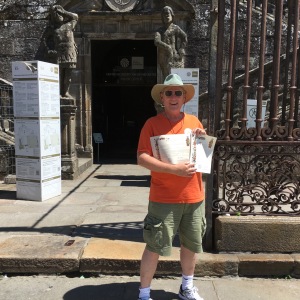
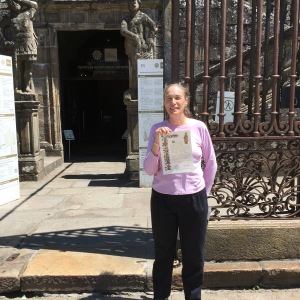
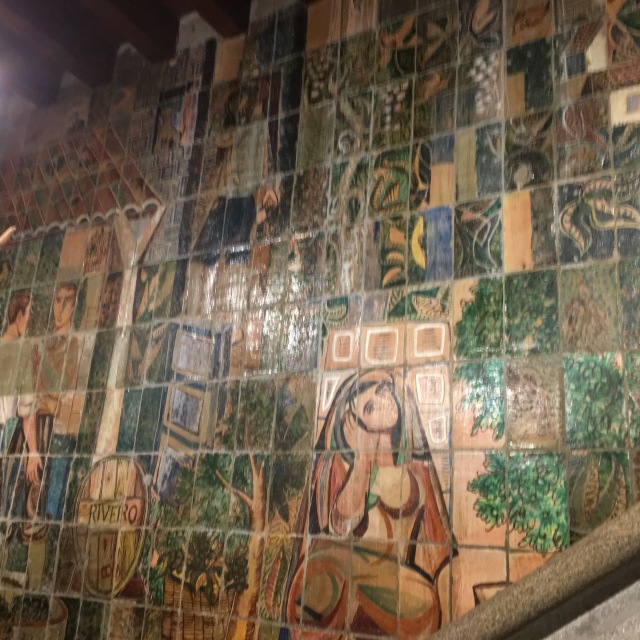

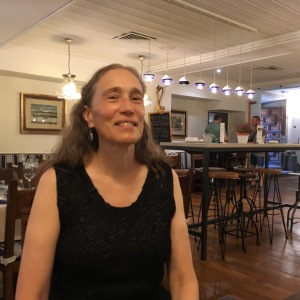
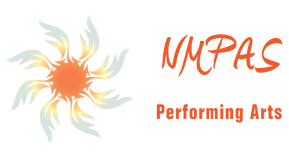
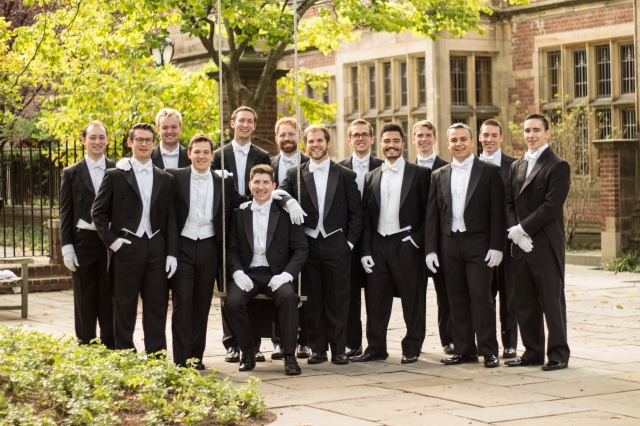












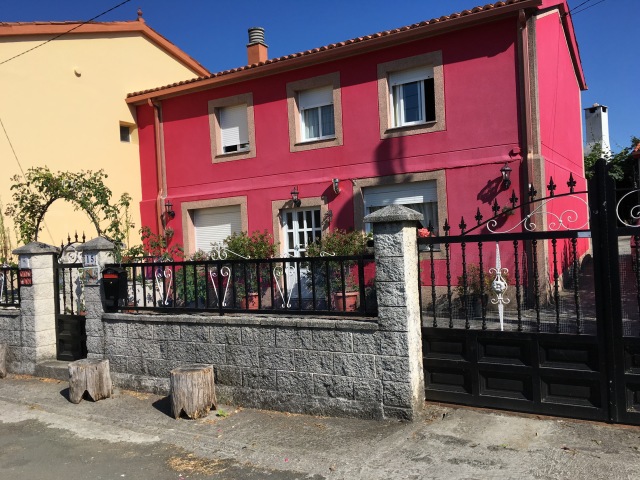
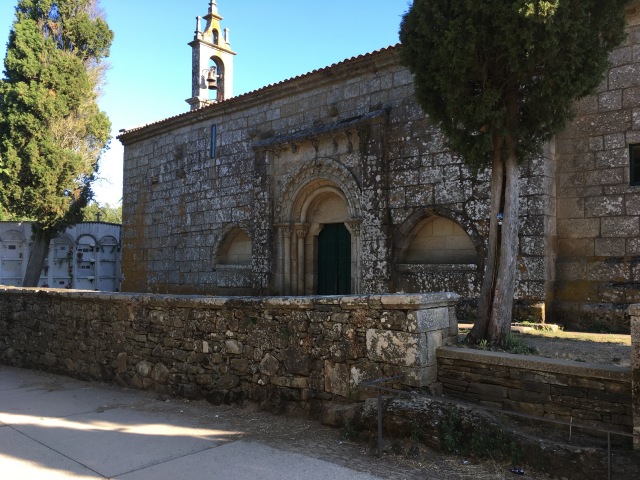





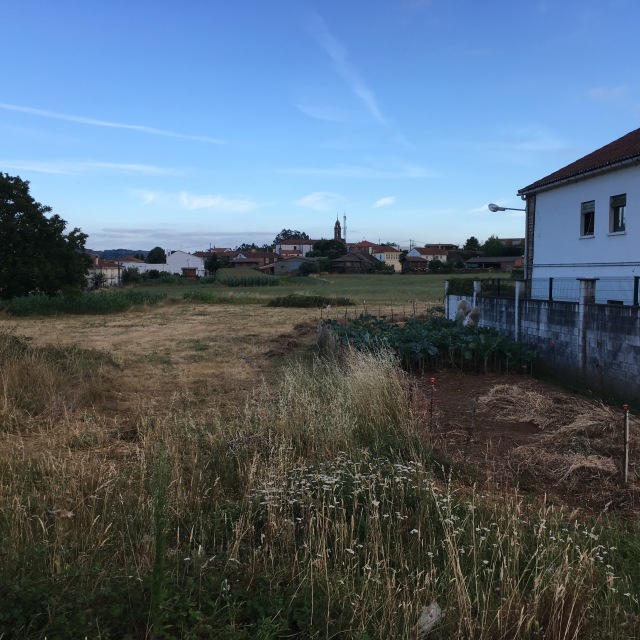

 A big stand of beautiful (cedar?) trees with ferns and other shrubs next to the roadside
A big stand of beautiful (cedar?) trees with ferns and other shrubs next to the roadside




